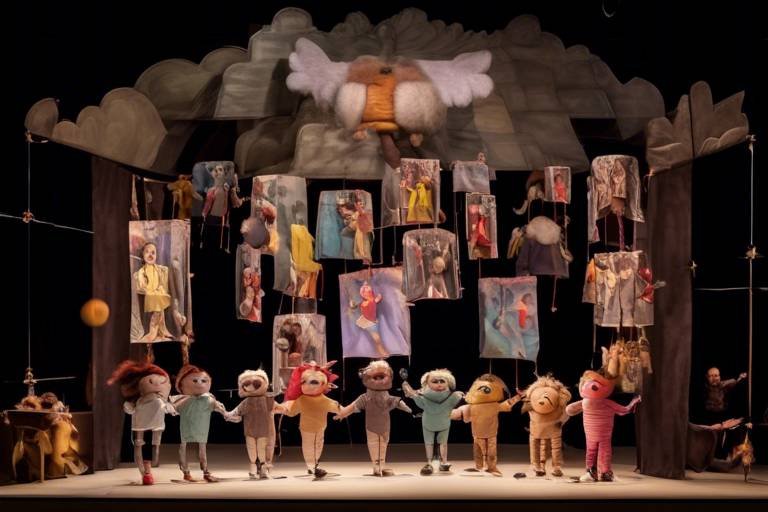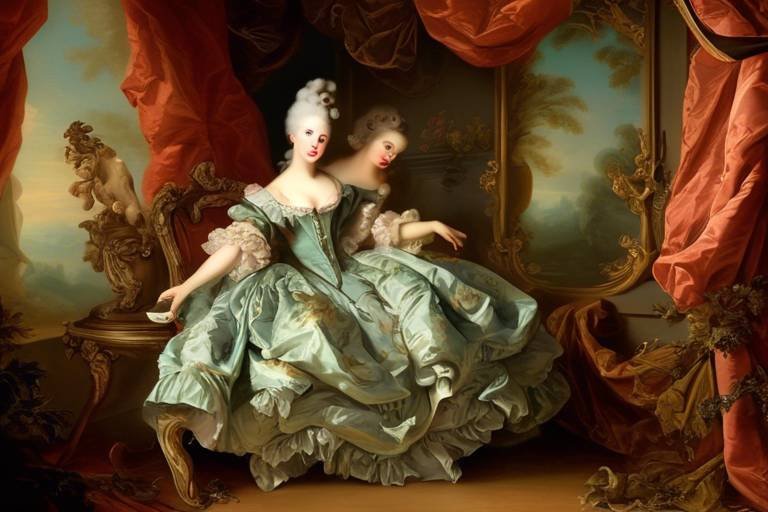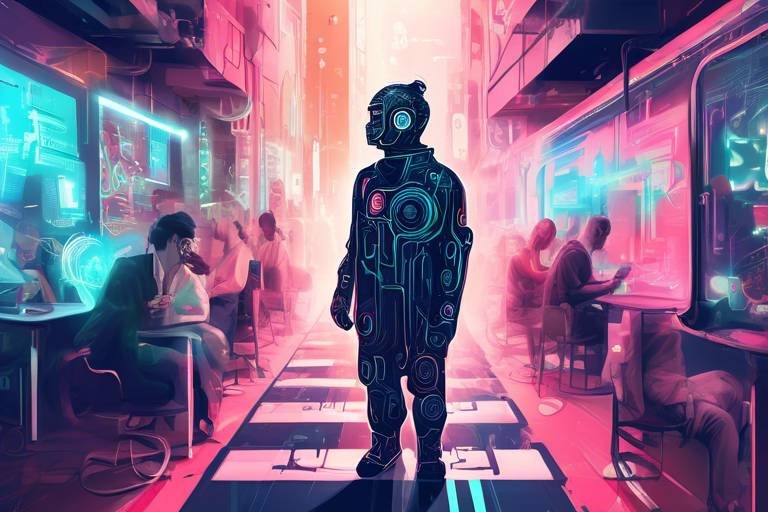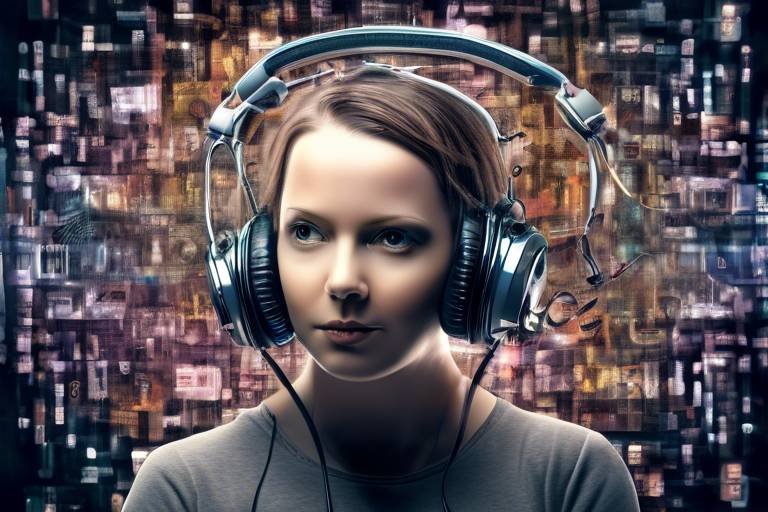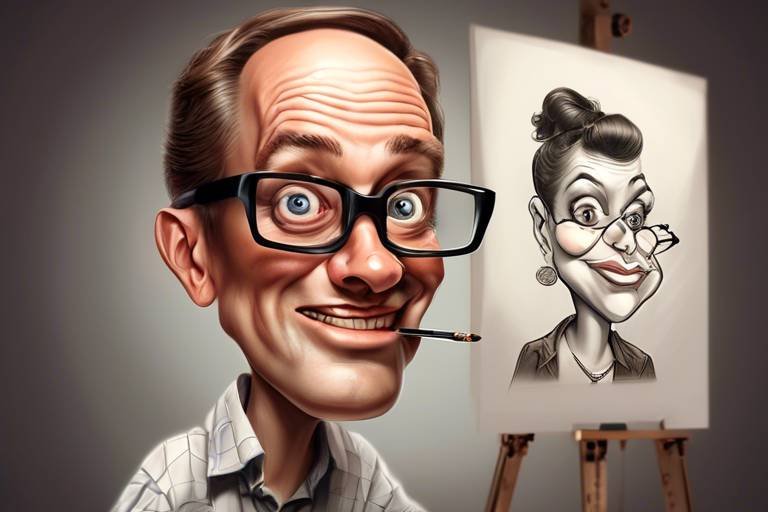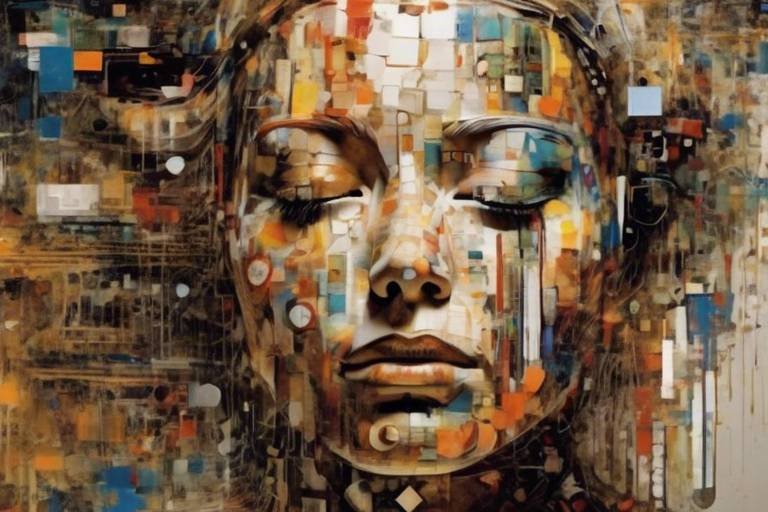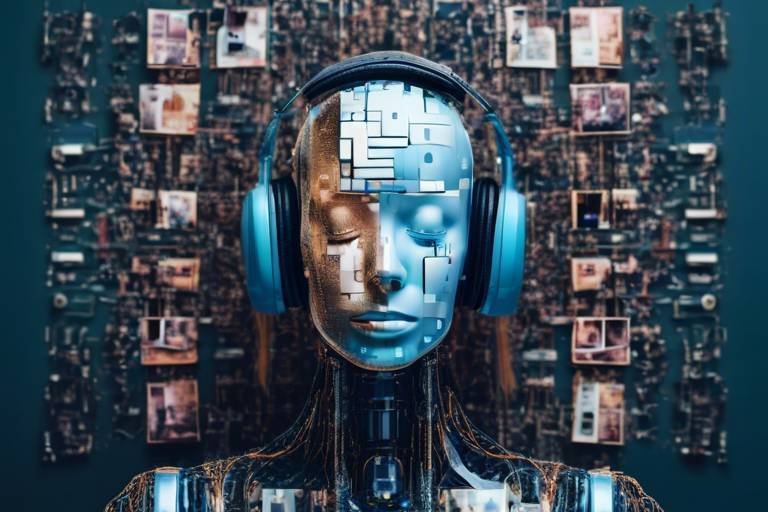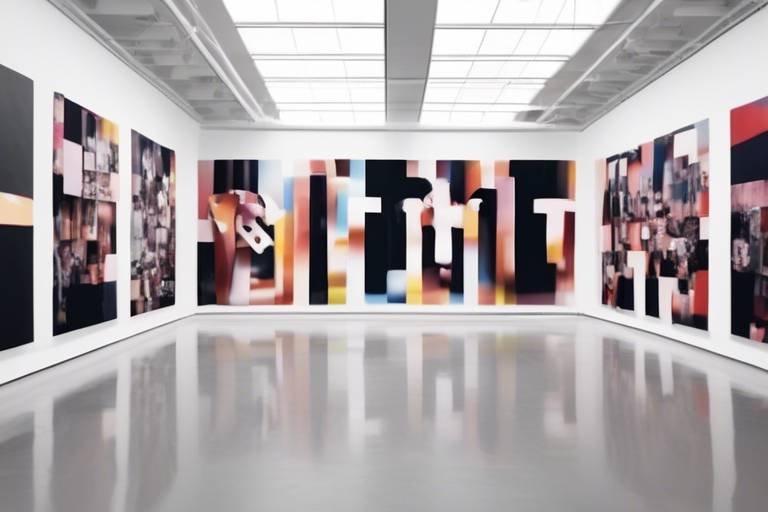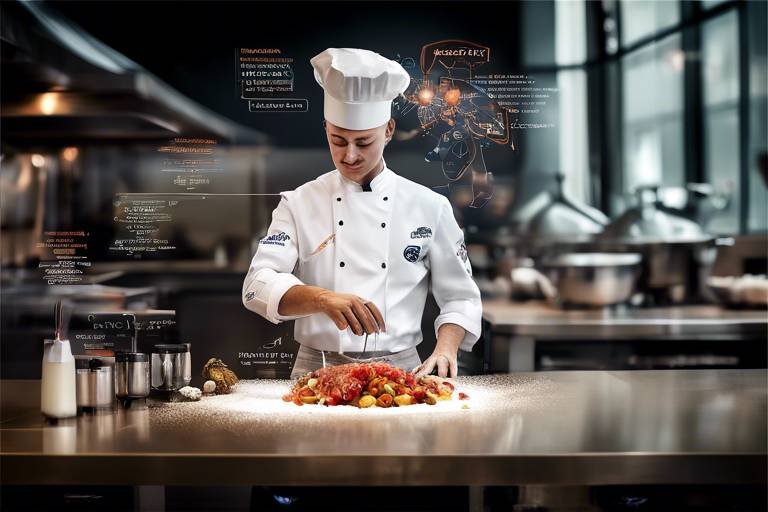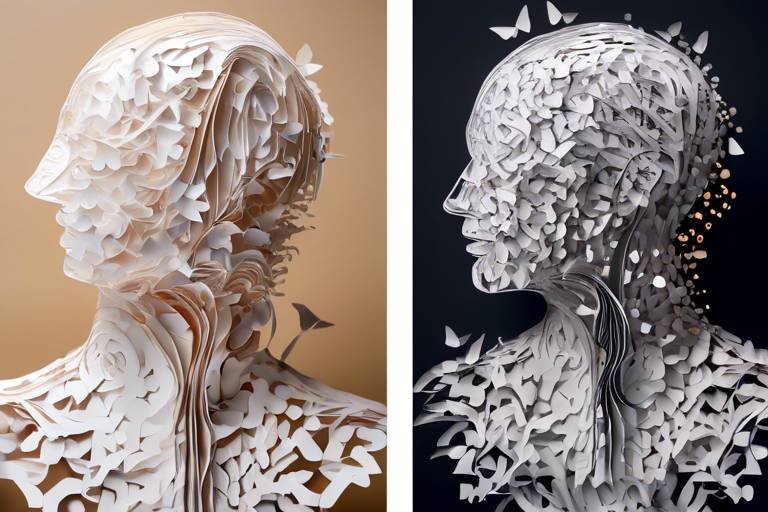Behind the Scenes: AI in Film Editing
In the world of filmmaking, editing is where the magic truly happens. It’s the art of weaving together various shots, sounds, and visuals to create a cohesive narrative. But what if I told you that this intricate process is undergoing a seismic shift thanks to artificial intelligence? Yes, AI is not just a buzzword anymore; it’s becoming an integral part of the editing suite, reshaping how films are crafted and experienced. Imagine having a digital assistant that can sift through thousands of hours of footage, identify the best takes, and even suggest edits based on the emotional tone of the scene. Sounds like something out of a sci-fi movie, right? But it’s happening right now, and it’s revolutionizing the film industry.
As we dive deeper into this fascinating topic, we’ll explore how AI is transforming the editing process, the tools that are making waves, and the potential challenges that come along with it. The marriage of technology and creativity is opening doors we never thought possible, but it also raises questions about the future of the industry. Will editors become obsolete, or will they evolve into something even more remarkable? Buckle up as we take you behind the scenes of film editing in the age of AI!
To truly appreciate the impact of AI on film editing, we must first understand its evolution. From the early days of celluloid film and manual splicing to the sophisticated digital editing suites we have today, the journey has been nothing short of extraordinary. Initially, editors relied on physical film reels, cutting and pasting to create a narrative. This painstaking process required immense skill and patience, but it was also limited by time and resources.
With the advent of digital technology, editing transformed dramatically. Software like Adobe Premiere and Final Cut Pro introduced non-linear editing, allowing editors to manipulate footage with unprecedented flexibility. Fast forward to today, and we see the integration of AI, which takes this flexibility to a whole new level. AI algorithms can analyze footage, recognize patterns, and even predict what an editor might need next, making the editing process faster and more efficient.
So, what exactly does AI bring to the table in film editing? At its core, AI in this context refers to the use of machine learning algorithms that can analyze vast amounts of data quickly and accurately. These algorithms learn from previous edits, audience preferences, and even emotional cues to assist editors in making informed decisions. For instance, an AI tool can evaluate a scene's pacing and suggest cuts that enhance the overall flow of the narrative.
Today, there’s a plethora of AI tools available for film editors. These tools are designed to enhance productivity and creativity in ways we never thought possible. Here’s a brief overview of some of the most exciting AI tools currently making waves in the industry:
| Tool Name | Features | Benefits |
|---|---|---|
| Adobe Sensei | Automated tagging, scene detection | Speeds up the editing process |
| Magisto | AI-driven video editing | Creates polished videos quickly |
| Filmora | AI portrait, motion tracking | Enhances creativity with ease |
Automated editing software is one of the most exciting developments in AI. These programs can take raw footage and create a rough cut in minutes, allowing editors to focus on the finer details. Imagine the time saved when you can let software handle the grunt work while you concentrate on storytelling!
Color grading is another area where AI shines. Traditional color grading can be a tedious process, often requiring hours of meticulous adjustments. However, AI-powered tools can analyze the color palette of a film and make suggestions to achieve a consistent aesthetic. This not only saves time but also ensures that the film maintains its visual integrity throughout.
While some may fear that AI could stifle creativity, the opposite is often true. AI can act as a collaborator, providing editors with insights and suggestions that enhance their creative decisions. It’s like having a brainstorming partner that never runs out of ideas! This synergy between human creativity and AI efficiency can lead to groundbreaking storytelling.
Despite the many benefits, the integration of AI in film editing is not without its challenges. One major concern is the potential for job displacement. As AI tools become more capable, some fear that traditional editing roles may become obsolete. However, it’s essential to recognize that technology has always changed the landscape of creative professions, often leading to new opportunities rather than outright replacement.
While it’s natural to worry about job security, it’s crucial for professionals to adapt and evolve. Embracing AI as a tool rather than a threat can open up new avenues for creativity and efficiency. Those who can harness AI’s capabilities will likely find themselves in high demand, as they can offer unique insights and a blend of technical and creative skills.
Another challenge lies in balancing automation with quality. While AI can streamline processes, it’s vital to ensure that the artistic vision is not compromised. Editors must remain vigilant, maintaining a strong creative voice while leveraging AI’s capabilities. It’s a delicate dance, but one that can lead to stunning results when done right.
As we look to the future, it’s clear that AI will continue to play a pivotal role in film editing. The tools will become more sophisticated, and the integration with other technologies, such as virtual reality and augmented reality, will create even more exciting possibilities. The landscape of film editing is evolving, and those who embrace these changes will be at the forefront of this thrilling new era.
- Will AI replace human editors? While AI will change the editing landscape, it is more likely to augment human creativity rather than replace it.
- How can I learn to use AI tools for editing? Many online courses and tutorials are available that focus on AI tools in film editing.
- Are there any risks associated with using AI in editing? Yes, there are concerns about job displacement and maintaining quality, but these can be managed with proper training and adaptation.

The Evolution of Film Editing
Film editing has come a long way since the early days of cinema. In fact, the evolution of this craft can be likened to the transformation of a caterpillar into a butterfly, where each stage brings new capabilities and complexities. Initially, editing was a painstakingly manual process involving physical film strips. Editors would cut and splice film using scissors and tape, a method that required immense precision and a keen eye for detail. This traditional approach, while effective, was time-consuming and often limited by the technology of the time.
As the decades rolled on, the introduction of digital technologies revolutionized the editing landscape. The late 20th century saw the emergence of non-linear editing systems (NLEs), which allowed editors to access any part of the film without having to go through the entire reel. This was akin to flipping through a book rather than reading it cover to cover. Editors could now experiment with different cuts and arrangements, enhancing their creativity and efficiency. The transition from analog to digital not only made the process faster but also opened the door to a plethora of new techniques and tools.
Fast forward to the present, and we find ourselves at the forefront of yet another transformation: the integration of artificial intelligence (AI). AI is not just a buzzword; it’s a game-changer in film editing. With machine learning algorithms capable of analyzing vast amounts of data, AI tools can assist editors in making informed decisions, suggesting cuts, and even automating mundane tasks. Imagine having a personal assistant that understands your editing style and helps you achieve your vision. This level of assistance allows editors to focus more on the creative aspects of their work rather than getting bogged down in technical details.
The evolution of film editing can be summarized in the following stages:
| Era | Editing Method | Key Features |
|---|---|---|
| Early Cinema | Manual Cutting | Physical film strips, scissors, and tape. |
| Late 20th Century | Non-Linear Editing | Digital access, flexibility, and creative experimentation. |
| Present Day | AI-Assisted Editing | Automation, data analysis, and enhanced creativity. |
In this rapidly evolving field, editors are not just technicians; they are artists who blend technology with storytelling. The advancements in editing tools have made it possible to tell stories in ways that were previously unimaginable. The future of film editing is bright, and as AI continues to evolve, we can expect even more innovative solutions that will reshape how films are edited and produced. This journey from manual splicing to AI-assisted editing reflects not only a shift in technology but also a profound change in how we perceive and create cinematic art.

Understanding AI in Film Editing
When we dive into the world of film editing, it’s hard not to notice the incredible impact that artificial intelligence (AI) has made in recent years. But what exactly does AI mean in this context? At its core, AI refers to the simulation of human intelligence processes by machines, particularly computer systems. This includes the ability to learn, reason, and self-correct, which is a game-changer for film editors who are constantly juggling multiple tasks and deadlines. Imagine having a virtual assistant that can analyze hours of footage, suggest cuts, and even help in color grading—sounds like a dream, right?
AI in film editing utilizes advanced algorithms and machine learning capabilities to streamline the editing process. These technologies can analyze vast amounts of data, recognizing patterns and making predictions based on previous editing choices. For instance, AI can identify the most engaging clips, suggest transitions, and even help in organizing footage based on content and context. This not only saves time but also allows editors to focus more on the creative aspects of their work.
One of the most fascinating applications of AI in film editing is its ability to enhance the workflow through various tools. For example, consider the following AI tools that are currently making waves in the industry:
| AI Tool | Features | Benefits |
|---|---|---|
| Adobe Premiere Pro's Sensei | Automated scene editing, smart tagging | Saves time, improves organization |
| Magisto | AI-driven video creation | Quick edits, user-friendly interface |
| DaVinci Resolve | AI-powered color correction | Consistency in visuals, professional quality |
These tools are not just gimmicks; they are designed to enhance productivity and make the editing process more efficient. By automating routine tasks, AI frees up editors to unleash their creativity and focus on storytelling. Imagine being able to spend more time perfecting the narrative arc of a film rather than getting bogged down in technical details. That's the beauty of integrating AI into film editing!
Moreover, AI can provide valuable insights into audience preferences and trends, helping editors make more informed decisions. For instance, AI can analyze viewer engagement data from previous films to suggest what types of scenes or editing styles resonate best with audiences. This data-driven approach can be a game-changer, allowing editors to tailor their work to meet audience expectations while still maintaining their unique artistic vision.
In summary, understanding AI in film editing is about recognizing its potential to revolutionize the industry. By automating mundane tasks and providing insights based on data, AI not only enhances the editing workflow but also empowers editors to focus on the creative aspects of their craft. As technology continues to evolve, the synergy between AI and human creativity will undoubtedly lead to more innovative and captivating films.

AI Tools for Editors
In the ever-evolving world of film editing, AI tools have emerged as game changers, revolutionizing the way editors approach their craft. These tools leverage advanced algorithms and machine learning capabilities to streamline the editing process, making it faster and more efficient. Imagine having a virtual assistant that not only understands your editing style but also anticipates your needs—this is precisely what AI tools offer to modern editors.
One of the most exciting aspects of AI in film editing is the wide array of tools available today. These tools can automate mundane tasks, allowing editors to focus on the more creative aspects of their projects. For instance, software like Adobe Premiere Pro has integrated AI features that help with everything from auto-reframing to scene detection. This means that editors can spend less time sifting through hours of footage and more time crafting a compelling narrative.
Moreover, AI tools can analyze vast amounts of data at lightning speed. They can identify patterns, suggest edits based on previous projects, and even help in organizing footage. This capability not only enhances productivity but also ensures that no crucial element is overlooked. For example, AI-driven software can automatically tag and categorize clips based on content, making it easier for editors to locate specific shots when needed.
But it's not just about efficiency; AI tools also enhance the creative process. They can provide suggestions that align with the editor's vision, offering fresh perspectives that might not have been considered otherwise. Imagine editing a dramatic scene and receiving AI-generated recommendations on pacing or emotional beats—this is the kind of collaboration that can elevate the final product.
To give you a clearer picture, here's a quick overview of some popular AI tools currently making waves in the editing world:
| Tool Name | Features | Benefits |
|---|---|---|
| Adobe Premiere Pro | Auto-reframing, scene detection | Streamlined editing, time-saving |
| DaVinci Resolve | AI-driven color grading | Enhanced visual consistency |
| Filmora | AI portrait, motion tracking | User-friendly, creative flexibility |
As we look to the future, the potential for AI tools in film editing is vast. The technology is continually improving, promising even more sophisticated features that can further enhance the editing experience. For editors, this means embracing these tools not as replacements but as valuable partners in the creative process. The synergy between human creativity and AI assistance could lead to groundbreaking advancements in storytelling and visual aesthetics.
- What are the main benefits of using AI tools in film editing? AI tools streamline the editing process, enhance creativity, and save time by automating repetitive tasks.
- Are AI tools replacing human editors? No, AI tools are designed to assist editors, not replace them. They enhance the creative process and allow editors to focus on storytelling.
- What types of AI tools are available for film editors? There are various AI tools available, including automated editing software, AI-powered color grading tools, and intelligent organization systems.

Automated Editing Software
In the fast-paced world of film production, has emerged as a game-changer, revolutionizing the way editors approach their craft. Imagine a world where tedious tasks like syncing audio, cutting excess footage, and even generating rough cuts can be done in a fraction of the time it used to take. This is not just a dream; it’s the reality brought to life by advanced AI algorithms and machine learning technologies. These tools are designed to handle repetitive tasks, allowing human editors to focus on the creative aspects of storytelling.
One of the most significant benefits of automated editing software is its ability to analyze vast amounts of footage quickly. For instance, consider a feature film with hundreds of hours of raw footage. Manually sifting through all that material can be overwhelming. However, AI-powered software can scan and identify the best takes, suggest edits based on pacing, and even recognize emotional cues in performances. This not only speeds up the editing process but also enhances the overall quality of the final product.
Moreover, automated editing tools come equipped with features that can drastically reduce the time spent on mundane tasks. Here are some key functionalities that these tools offer:
- Smart Scene Detection: Automatically identifies changes in scenes, making it easier to organize clips.
- Audio Syncing: Matches audio tracks with video footage seamlessly, saving hours of manual work.
- Template-Based Editing: Provides pre-set templates for various types of projects, streamlining the editing process.
While the benefits are clear, it’s essential to remember that automated editing software is not meant to replace human editors. Instead, it serves as a collaborative tool that enhances the editing workflow. By taking care of the repetitive and time-consuming aspects of editing, these tools allow editors to invest their energy in crafting a compelling narrative, making creative decisions, and adding their unique touch to the film. The blend of human creativity and AI efficiency creates a powerful synergy that can lead to remarkable results.
As we look to the future, the evolution of automated editing software will undoubtedly continue. Innovations in AI and machine learning will lead to even more sophisticated tools that can understand context, style, and narrative structure. This means that the role of the editor will shift, allowing them to become more of a story architect rather than just a technician. Embracing these changes will be crucial for professionals in the industry, ensuring that they remain relevant in an ever-evolving landscape.

AI-Powered Color Grading
When it comes to film editing, color grading is one of the most crucial aspects that can dramatically influence the mood and tone of a film. Traditionally, color grading was a tedious and time-consuming process, requiring a skilled editor to meticulously adjust hues, saturation, and contrast frame by frame. However, with the advent of tools, this once labor-intensive task has been revolutionized, allowing editors to achieve stunning visual aesthetics with remarkable efficiency.
AI algorithms can analyze the footage and automatically suggest color adjustments based on the desired look and feel of the film. Imagine having a virtual assistant who understands the emotional context of your scenes and can recommend color palettes that enhance storytelling. This is where AI shines—by processing vast amounts of data and learning from existing films, AI tools can provide editors with suggestions that are not only technically sound but also artistically compelling.
For instance, consider a dramatic scene that requires a somber tone. An AI tool can automatically detect the mood and propose a color grading scheme with cooler tones, desaturation, and increased contrast, all while ensuring that the skin tones remain natural. This ability to maintain consistency across the film is invaluable, as it helps to preserve the director's vision without the editor having to manually adjust every single frame.
Moreover, AI-powered color grading tools can come equipped with features that allow for real-time adjustments. This means that as the editor makes changes, the AI can instantly adapt and refine suggestions, leading to a more dynamic editing process. The collaboration between human creativity and AI technology not only speeds up the workflow but also opens up new avenues for creative exploration.
To give you a clearer picture, here’s a brief comparison of traditional versus AI-powered color grading:
| Aspect | Traditional Color Grading | AI-Powered Color Grading |
|---|---|---|
| Time Consumption | High | Low |
| Consistency | Variable | High |
| Manual Labor | Extensive | Minimal |
| Learning Curve | Steep | Accessible |
Despite the numerous advantages, it’s essential to acknowledge that AI-powered color grading is not without its challenges. While these tools can significantly enhance the editing process, they also require a certain level of understanding from the editor. It’s vital for professionals to remain engaged in the creative process, ensuring that the final product aligns with the original vision. After all, while AI can assist, it cannot replace the human touch that brings a film to life.
In conclusion, AI-powered color grading is reshaping the landscape of film editing, providing editors with powerful tools to enhance their creative capabilities while streamlining workflows. As technology continues to evolve, it's exciting to think about the possibilities that lie ahead, where the synergy between human creativity and artificial intelligence can lead to even more breathtaking cinematic experiences.
- What is AI-powered color grading? AI-powered color grading refers to the use of artificial intelligence algorithms to assist in adjusting the colors, tones, and overall visual aesthetics of a film, making the process faster and more efficient.
- How does AI improve color grading? AI improves color grading by analyzing footage, suggesting color adjustments based on mood and context, and maintaining consistency across scenes, thus enhancing the overall storytelling.
- Can AI completely replace human editors? While AI can significantly aid the editing process, it cannot fully replace human editors, who bring creativity and artistic vision to the work.
- Are AI tools easy to use for novice editors? Yes, many AI-powered color grading tools are designed to be user-friendly, making them accessible to novice editors while still providing advanced features for experienced professionals.

Enhancing Creativity with AI
When we think about the world of film editing, the word creativity often comes to mind. It's all about weaving together visuals, sounds, and emotions to create a captivating story. But here's the twist: what if I told you that artificial intelligence is stepping into this creative arena, not to replace editors, but to enhance their artistic capabilities? Yes, you heard that right! AI is becoming a trusted ally for editors, providing them with tools that can spark new ideas and streamline the editing process.
Imagine sitting in a dimly lit editing suite, surrounded by clips from a recent shoot. You have a vision in mind, but the sheer amount of footage can be overwhelming. This is where AI swoops in like a superhero. With its advanced algorithms, AI can analyze hours of footage in mere minutes, identifying key moments and suggesting potential edits. It's like having a second pair of eyes that never tires and can sift through data faster than you can say "cut!"
One of the most exciting aspects of AI in film editing is its ability to learn and adapt. Through machine learning, AI tools can study an editor's style and preferences over time. This means that the more you use these tools, the better they become at understanding your unique creative voice. It's akin to having a personal assistant who not only knows your favorite coffee order but also anticipates your editing choices. How cool is that?
Moreover, AI can offer suggestions that might just push your creative boundaries. For instance, it can recommend alternative cuts or highlight moments that you might have missed. Think of it as a brainstorming partner that never runs out of ideas. This collaborative relationship between human creativity and AI efficiency can lead to innovative storytelling techniques that keep audiences on the edge of their seats.
Of course, while AI enhances creativity, it's essential to remember that it doesn't replace the human touch. The emotional depth and nuanced storytelling that a skilled editor brings to the table cannot be replicated by machines. Instead, AI serves as a tool that complements and amplifies an editor's creative vision. It allows them to focus on what they do best: crafting a narrative that resonates with viewers.
In conclusion, the integration of AI in film editing is not just a technological advancement; it's a revolution in how we approach creativity. By embracing these tools, editors can unlock new levels of artistic expression, making the editing process not only more efficient but also more exciting. As we look to the future, the collaboration between human intuition and AI innovation promises to redefine what is possible in the realm of film editing.
- How does AI improve the editing process? AI analyzes footage quickly, suggesting cuts and identifying key moments, which saves editors time and enhances their creative options.
- Can AI replace human editors? No, AI is designed to assist and enhance the creativity of human editors, not replace them. The emotional and artistic touch of a human is irreplaceable.
- What are some popular AI tools for film editing? Tools like Adobe Premiere Pro's AI features and Magisto are becoming popular for their ability to streamline editing tasks and provide creative suggestions.

Challenges of AI in Film Editing
As technology continues to advance at a breakneck pace, the film editing industry is caught in a whirlwind of transformation brought about by artificial intelligence. However, with every shiny new tool comes a set of challenges that cannot be ignored. One of the most pressing concerns is the potential for job displacement. As AI systems become more adept at performing tasks traditionally handled by human editors, many professionals find themselves asking, "Will my skills still be relevant in a world dominated by algorithms?" It's a fair question, considering how rapidly AI is evolving. The fear is palpable; many seasoned editors worry that their years of experience might be rendered obsolete by a machine that can process footage in a fraction of the time it takes a human. This concern isn’t unfounded, as we’ve already seen industries transformed by automation, leaving skilled workers scrambling to find new roles.
Another challenge lies in the balance between quality and automation. While AI can streamline the editing process and reduce the time spent on mundane tasks, there’s an inherent risk of sacrificing the artistic vision that makes a film truly special. Imagine a beautiful painting where an artist meticulously chooses every color and stroke, only to have it recreated by a machine that lacks the soul of creativity. Editors fear that over-reliance on automated processes might lead to a homogenization of content, where films start to feel more like products churned out by a factory rather than unique artistic expressions.
Moreover, the integration of AI in film editing raises questions about creativity and intuition. Can a machine genuinely understand the nuances of storytelling and emotional impact? While AI can analyze patterns and suggest edits based on data, it lacks the human touch that often makes a film resonate with audiences. Editors often rely on their instincts and experiences to make decisions that machines simply can't replicate. This raises another critical question: how can we ensure that AI serves as a tool to enhance creativity rather than a crutch that stifles it?
In addition to these concerns, there are also ethical implications to consider. The use of AI in film editing brings up issues of copyright and ownership. If an AI system generates a significant portion of the editing work, who owns the final product? This question becomes even murkier when considering collaborative efforts among multiple artists and machines. As we navigate this new landscape, it’s crucial for industry professionals to establish guidelines that protect the rights of human creators while embracing the advantages that AI offers.
Ultimately, while the challenges posed by AI in film editing are significant, they also present an opportunity for growth and adaptation. The key lies in finding a balance between leveraging technology and preserving the essence of human creativity. As we look toward the future, it’s essential for editors to embrace continual learning, honing their skills to work alongside AI rather than against it. In this way, the film editing community can evolve, ensuring that the art of storytelling remains vibrant and impactful.
- Will AI replace film editors? While AI can automate certain tasks, it is unlikely to completely replace human editors. Instead, it will serve as a tool to enhance their capabilities.
- How can editors adapt to the rise of AI? Editors can stay relevant by embracing new technologies, learning to work alongside AI tools, and focusing on the creative aspects of editing that machines cannot replicate.
- What are the ethical concerns surrounding AI in film editing? Issues of copyright, ownership, and the potential for homogenization of content are key ethical considerations as AI becomes more integrated into the editing process.

Job Displacement Concerns
As we dive into the realm of AI in film editing, one of the most pressing issues that arises is the concern of job displacement. The rapid advancements in technology often lead to fears that machines will replace human creativity and craftsmanship. In the film editing industry, where the art of storytelling is paramount, this fear is palpable. Many editors wonder: "Will I still have a job in a world where AI can do my work?"
To understand this concern, it's essential to recognize the dual nature of AI. On one hand, it offers incredible tools that can enhance productivity and efficiency, allowing editors to focus on the more creative aspects of their work. On the other hand, there is a legitimate worry that these tools could render certain editing jobs obsolete. For instance, automated editing software can cut down the time spent on mundane tasks like syncing audio and video, which traditionally required a human touch. This raises a critical question: Are we moving toward a future where the role of the editor is minimized to merely overseeing AI-generated edits?
However, it's important to consider the broader picture. While AI can handle repetitive tasks, it lacks the emotional intelligence and nuanced understanding of storytelling that human editors bring to the table. The essence of film editing lies not just in cutting and splicing footage, but in understanding the narrative, pacing, and emotional beats of a story. Therefore, rather than viewing AI as a replacement, it can be seen as a collaborative partner. Editors who embrace these technologies can leverage AI to enhance their work, allowing them to spend more time on the creative aspects that machines cannot replicate.
To adapt to this changing landscape, film editors can focus on developing skills that AI cannot easily replicate. For example, honing one's ability to tell compelling stories, understanding audience emotions, and mastering the art of visual aesthetics will remain crucial. Furthermore, the industry may evolve to create new roles that focus on overseeing AI tools, ensuring that the final product aligns with the artistic vision of the filmmakers.
In conclusion, while the fear of job displacement due to AI in film editing is valid, it is equally important to recognize the opportunities that come with these advancements. By embracing AI as a tool rather than a threat, editors can enhance their creativity, improve efficiency, and ultimately contribute to a more dynamic film industry. The landscape is changing, but it doesn't have to be a bleak future for film editors; instead, it can be a future filled with collaboration, innovation, and growth.
- Will AI completely replace human editors? No, AI is designed to assist and enhance the editing process, not replace the creative input of human editors.
- What skills should editors develop to stay relevant? Focus on storytelling, emotional intelligence, and visual aesthetics, as these are areas where humans excel over machines.
- How can AI improve the editing workflow? AI can automate repetitive tasks, allowing editors to concentrate on creative decisions and storytelling.
- Are there new job opportunities emerging in the industry? Yes, as AI technology evolves, new roles focusing on overseeing AI tools and integrating them into the editing process are likely to emerge.

Quality vs. Automation
In the fast-paced world of film editing, the tug-of-war between quality and automation is a hot topic. As artificial intelligence (AI) continues to revolutionize the editing process, many professionals find themselves asking: can we truly maintain the artistic essence of film when we lean heavily on automated tools? It’s like trying to bake a cake with a machine; sure, it can mix the ingredients perfectly, but can it capture the love and passion that a human baker puts into their creation?
On one hand, automated editing software can significantly speed up the editing process, allowing editors to focus on the more creative aspects of their work. Imagine having a tool that can sift through hours of footage, identifying the best takes and suggesting cuts based on predefined criteria. This can be a game-changer for editors who often work under tight deadlines. However, this raises an important question: does speed come at the cost of quality? When relying on algorithms to make decisions, are we sacrificing the nuanced understanding that a human editor brings to the table?
Let’s break down some of the key considerations in this ongoing debate:
- Human Touch: While AI can analyze data and trends, it lacks the emotional intelligence that a human editor possesses. The subtlety of storytelling often requires a personal touch that machines simply cannot replicate.
- Consistency vs. Creativity: Automation can ensure a level of consistency across projects, but it might also limit creative expression. Editors might find themselves constrained by the parameters set by the software.
- Quality Control: Automated processes can lead to oversights. A human editor is more likely to catch mistakes or inconsistencies that an AI might overlook, ensuring that the final product meets high standards.
To illustrate this, let's take a look at a simple comparison of traditional editing versus automated editing:
| Aspect | Traditional Editing | Automated Editing |
|---|---|---|
| Speed | Slower, requires more time for decision-making | Faster, can process large amounts of footage quickly |
| Creativity | High, relies on personal intuition and artistry | Limited, follows algorithmic suggestions |
| Quality Control | High, human oversight ensures quality | Variable, dependent on the software's capabilities |
As we navigate this evolving landscape, it’s crucial for filmmakers and editors to find a balance between leveraging the benefits of automation while still preserving the artistic integrity of their work. The future of film editing may well depend on how effectively we can blend the efficiency of AI with the irreplaceable human touch.
In conclusion, the debate over quality versus automation in film editing is not just about technology; it's about the very essence of storytelling. As we embrace these new tools, let’s not forget the heart and soul that make films resonate with audiences. After all, a film is more than just a collection of images; it’s an experience that should evoke emotions and provoke thoughts. Striking the right balance will be key as we move forward in this exciting era of film editing.
- Can AI replace human editors?
No, while AI can assist in the editing process, it lacks the emotional depth and creativity that human editors provide. - How can I ensure quality when using automated tools?
Always review and refine the automated edits to ensure they align with your artistic vision. - What are the best AI tools for film editing?
Some popular tools include Adobe Premiere Pro with AI features, DaVinci Resolve, and Avid Media Composer.

The Future of AI in Film Editing
The future of AI in film editing is not just a speculative idea; it's a burgeoning reality that promises to revolutionize the way films are made. Imagine a world where editing isn't just a laborious task but a seamless process that enhances the creative vision of filmmakers. As technology continues to evolve, AI is set to become an indispensable collaborator for editors, offering capabilities that were once thought to be the realm of science fiction.
One of the most exciting prospects is the development of AI that can learn from human editors. This means that, over time, AI tools will adapt to individual editing styles and preferences, making the editing process more intuitive and personalized. Picture an AI that understands your unique approach to storytelling and can suggest cuts, transitions, and even pacing that align with your vision. This level of customization could significantly reduce the time spent on mundane tasks, allowing editors to focus more on the creative aspects of their work.
Moreover, as AI algorithms become more sophisticated, we can expect them to analyze vast amounts of data from previous films. This capability will enable AI to identify trends in audience preferences, helping filmmakers create content that resonates more deeply with viewers. For instance, AI could suggest specific editing techniques that have historically garnered positive reactions in similar genres, making the editing process not only faster but also smarter.
However, the integration of AI in film editing isn't without its challenges. As we look to the future, it's essential to consider the balance between automation and creative integrity. Editors will need to navigate the fine line between relying on AI for efficiency and ensuring that the heart and soul of storytelling remain intact. The goal should be to use AI as a tool that enhances creativity rather than replaces it.
In terms of industry trends, we can anticipate a rise in AI-powered collaborative platforms that allow multiple editors to work on a project simultaneously, regardless of their physical location. This shift could transform how film projects are managed, fostering a more collaborative environment where creativity knows no bounds. For example, imagine a team of editors from around the globe, each contributing their unique insights and styles, all while leveraging AI tools that streamline their workflow and enhance their collaborative efforts.
Ultimately, the future of AI in film editing is bright, filled with possibilities that can redefine the cinematic landscape. As technology advances, filmmakers will be empowered to tell their stories in ways we have yet to imagine. The key will be to embrace these innovations while maintaining the artistry that makes film a powerful medium for storytelling.
- Will AI completely replace human editors? No, AI is designed to assist and enhance the editing process, not to replace human creativity and intuition.
- How will AI change the role of film editors? AI will allow editors to focus more on creative decision-making by automating repetitive tasks and providing insightful suggestions.
- What are some AI tools currently used in film editing? Some popular AI tools include Adobe Premiere Pro's Sensei, Blackmagic Design's DaVinci Resolve, and Avid Media Composer.
- Can AI help with storytelling in film editing? Yes, AI can analyze audience preferences and suggest editing techniques that enhance storytelling.
Frequently Asked Questions
- What is the role of AI in film editing?
AI plays a transformative role in film editing by streamlining various processes. It helps editors with tasks like automating repetitive functions, enhancing color grading, and providing intelligent suggestions that can elevate the overall creative process. Imagine AI as a skilled assistant that not only speeds up the workflow but also offers insights that help editors make better decisions.
- How has film editing evolved over the years?
Film editing has come a long way from traditional methods involving physical film reels to advanced digital technologies. The integration of AI has further revolutionized this field, allowing for quicker edits, better visual consistency, and more time for creativity. It's like watching a caterpillar transform into a butterfly, where the editing process has become more vibrant and dynamic.
- What are some popular AI tools for film editors?
There are several AI tools that have gained popularity among film editors, including automated editing software, AI-powered color grading tools, and platforms that offer smart editing suggestions. These tools enhance the editing workflow by saving time and ensuring that the final product meets high-quality standards. Think of them as the Swiss Army knives of film editing—versatile and handy!
- Are there any challenges associated with using AI in film editing?
Yes, there are challenges, such as concerns about job displacement and the balance between automation and quality. Many professionals worry that AI could take over their roles, but it's essential to view AI as a tool that can assist rather than replace human creativity. The challenge lies in integrating AI in a way that enhances the artistic vision without compromising it.
- What does the future hold for AI in film editing?
The future of AI in film editing looks promising, with predictions of continued advancements in technology. As AI evolves, it will likely offer even more sophisticated tools that not only aid in editing but also inspire creativity. It's like peering into a crystal ball and seeing a world where editors can focus more on storytelling while AI handles the technical details.


